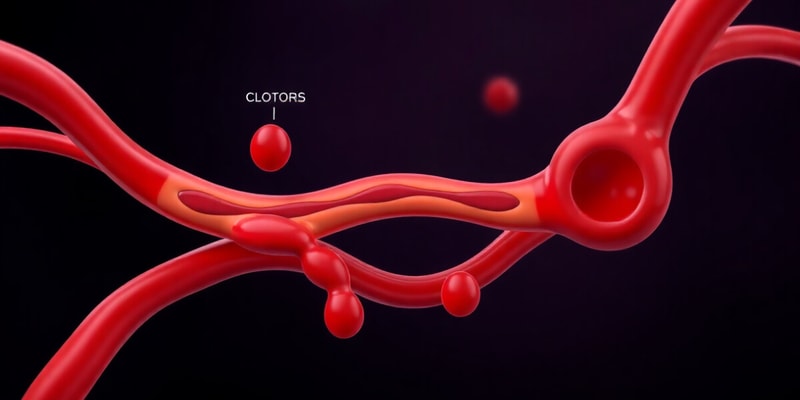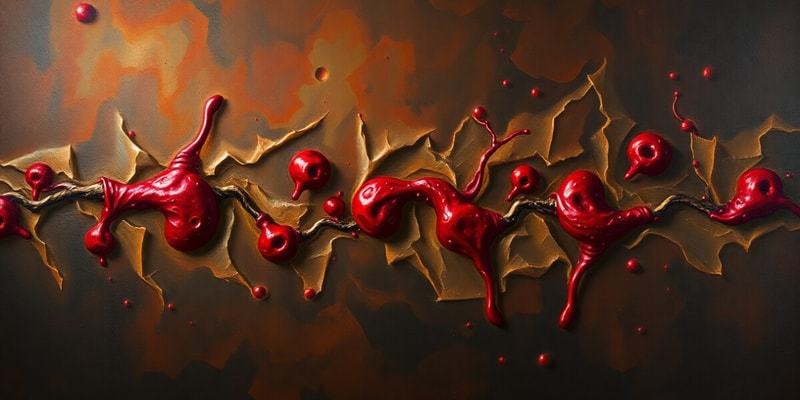Podcast
Questions and Answers
What is the primary purpose of the clotting cascade?
What is the primary purpose of the clotting cascade?
Which factor is NOT involved in the clotting cascade?
Which factor is NOT involved in the clotting cascade?
What is the role of thrombin in the clotting cascade?
What is the role of thrombin in the clotting cascade?
Where does the intrinsic pathway of the clotting cascade initiate?
Where does the intrinsic pathway of the clotting cascade initiate?
Signup and view all the answers
Which vitamin is crucial for the synthesis of clotting factors?
Which vitamin is crucial for the synthesis of clotting factors?
Signup and view all the answers
Study Notes
Clotting Cascade Diagram
- The diagram illustrates the clotting cascade, a process where blood transforms from a liquid to a solid state (a clot)
- Two main pathways exist: intrinsic and extrinsic
- Intrinsic Pathway: Initiated by the contact of blood with a foreign surface
- Begins with activation of factor XII (a plasma protein) and then a cascade of activations following until it meets the common pathway.
- Factors involved include: XII, XI, IX, VIII
-
Extrinsic Pathway: Triggered by tissue damage, exposing collagen.
- Begins with activation of factor VII upon contact with exposed collagen
- Factors involved include: VII, X
- Common Pathway: Both pathways converge at a common point
- Factors involved in the common pathway include: X, V, II and fibrin.
- Activation of factor X leads to the activation of prothrombin (factor II) into thrombin.
- Thrombin then converts fibrinogen into fibrin, forming a clot.
- Feedback loops exist to enhance the clotting cascade, for example:
- Activated platelets and thrombin aid in the activation of further clotting factors which accelerate clotting.
Studying That Suits You
Use AI to generate personalized quizzes and flashcards to suit your learning preferences.
Related Documents
Description
Explore the intricate processes of the clotting cascade, detailing both the intrinsic and extrinsic pathways. This quiz will help you understand how blood transforms from liquid to solid state through a series of activations leading to clot formation. Test your knowledge on the factors involved and their roles in hemostasis.



